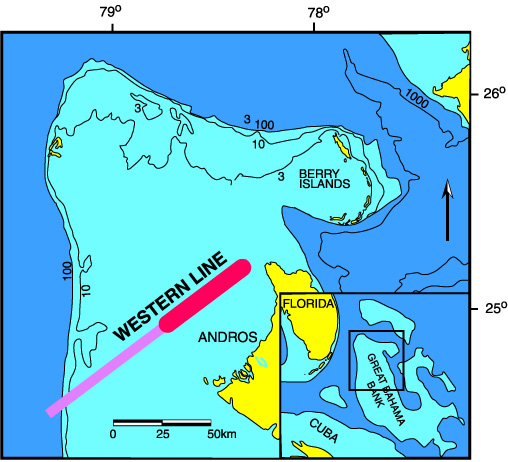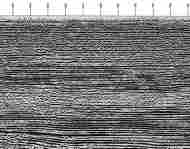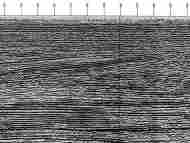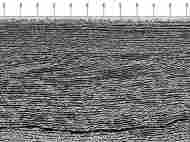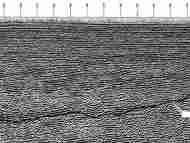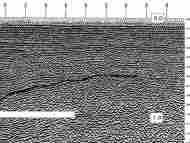 |
|
|
|||
|
Seismic
Sequence Analysis
To gain access to the complete image containing the un-interpreted seismic section of the exercise, click on the appropriate image to download it in a series of images (each divided image can be printed on a regular 11" X 8.5" paper).
However you do it, once the 2D seismic line has been downloaded it will be seen that the line is divided in 5 segments. These segments of the line should be taped together to form a complete seismic line. The objectives for this exercise are listed below. Start with 1) and work through to 4). Problem 3) may be considered as a dangerous call, but without tight biostratigraphic data the use of the Sea Level chart may be a best first pass as a tool for dating the stratigraphic section!!!
2) Examine the sedimentary architecture of the clinoforms and infer the origins of these features. For instance do the clinoform geometries show evidence of shelf onlap and does the downlap show evidence of slumping related to the shifting base level? Was there a variable rate of sediment supply to the area of study? Is there evidence of widespread changes in base level? To answer these:
3) As indicated above poor biostratigraphic control means it is difficult to determine the ages of the individual clinoforms, never the less Sen and Kendall(1999) have been able to infer the ages of the progradational Neogene clinoforms using the Haq and others (1987) eustatic chart for the Neogene has some 14 major changes in sea level, at least some of which might be expected to produce major second order type 1 unconformities. There were marked sea level lows, particularly the major type 1 unconformities and associated lows, that suggest these may have been large enough to produce erosional events at the crests of the clinoforms displayed by the seismic sections. Below the exercise proposes examination of the erosional events on the seismic sections to see if these events can be tied to the changes in base level predicted on the Haq and others (1987) chart. If this can be done, is it possible to establish their relative timing? Is there a match between the onlapping and downlapping geometries of the clinoformed section and the Haq et al 1987 sea level curves:
4)
The tectonic setting of the Bahamas could be considered to
be part of a foreland basin. To the south
of the Bahamas the effect of subduction beneath Cuba might
be expected to generate movement beside and beneath the Bahamas
with resulting local changes in accommodation in the Neogene
section displayed on the Western Geophysical Line. To this
end the internal geometries of the clinoforms seen on the
seismic line should be examined to see if a presence or an
absence of small-scale tectonic control on the area can be
detected.
|
|||
